This pub is closed permanently. Your nearest Wetherspoon pub: The Picture House, Stafford
For many years, the Wheatsheaf was at no.29 (north end of Gaolgate Street), the Three Tuns at no.33 and the Maid’s Head Inn further along, at the corner of Market Square. All three public houses were trading in 1830, yet the first two long outlived the Maid’s Head Inn; it burned down in 1887. Around that time, Bailey’s ironmongery store was at 25 Gaolgate Street, selling a huge range of products, such as solid brass lanterns or butler’s bells on a metal coil – with a powerful ring.
This pub has some original prison features, in reference to Gaol Gate.
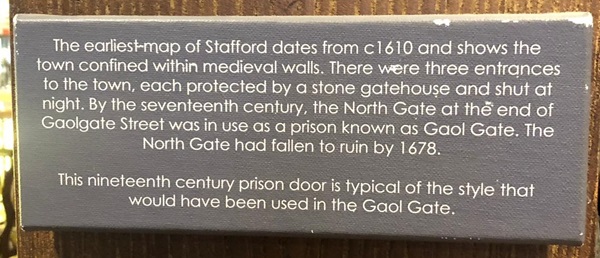
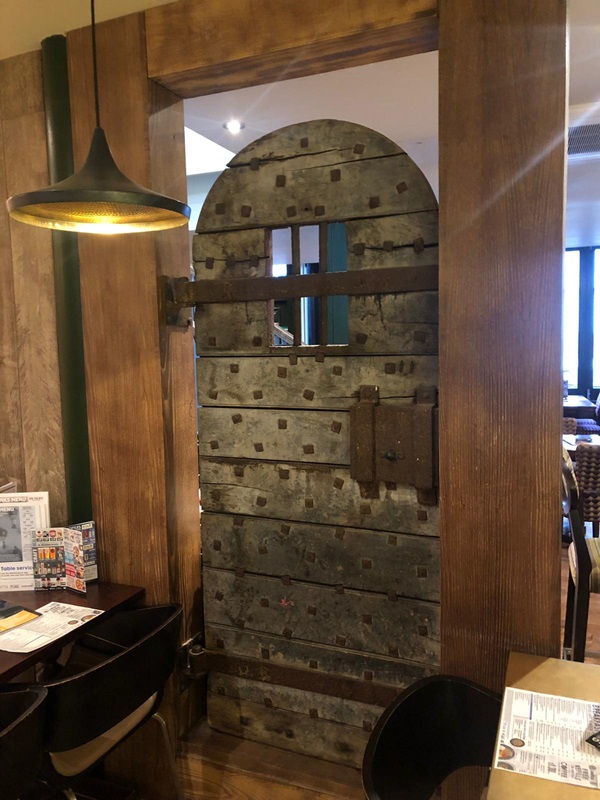
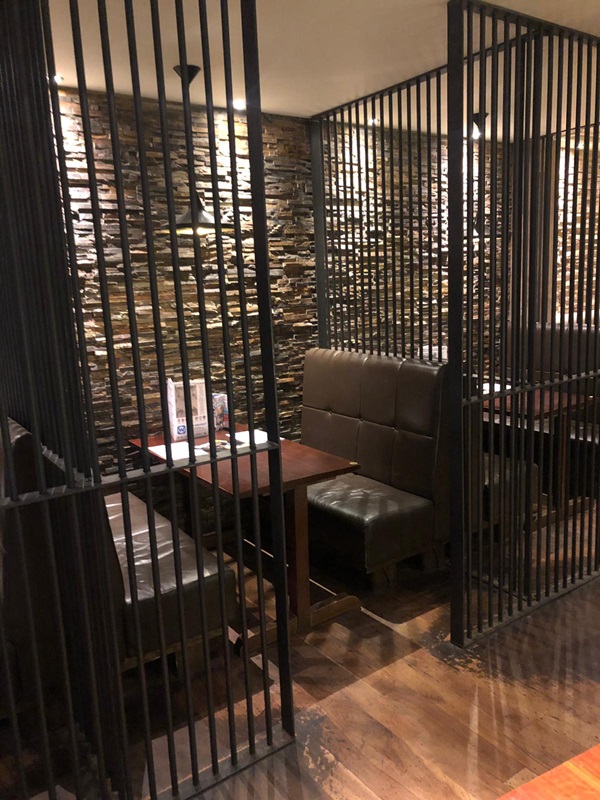
The earliest-map of Stafford dates from 1610 and shows the town confined within medieval walls. Here were three entrances to the town, each protected by a stone gatehouse and shut at night. By the 17th century, the North Gate at the end of Gaolgate Street was in use as a prison known as Gaol Gate. The North Gate had fallen to ruin by 1678.
This 19th century prison door is typical of the style that would have been used in the Gaol Gate.
Text about the history of the shoe industry.
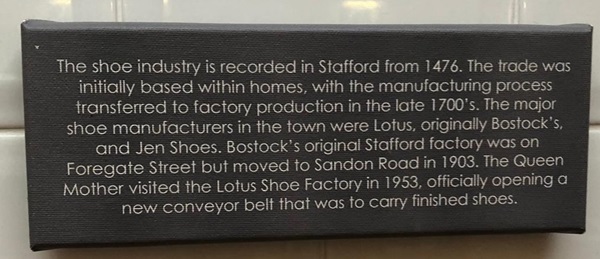
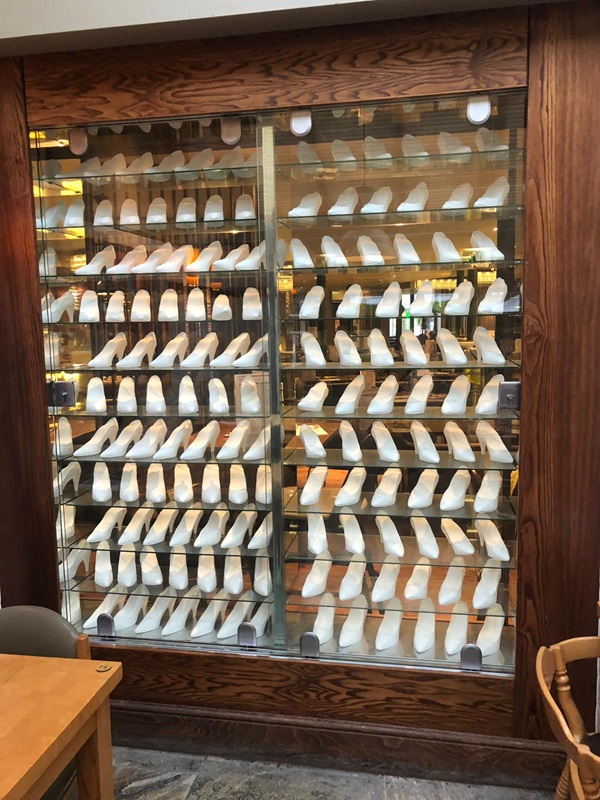
The text reads: The shoe industry is recorded in Stafford from 1476. The trade was initially based within homes, with the manufacturing process transferred to factory production in the late 1700s. The major shoe manufacturers in the town were Lotus, originally Bostock’s, and Jen Shoes. Bostock’s original Stafford factory was on Foregate Street but moved to Sandon Road in 1903. The Queen Mother visited the Lotus Shoe Factory in 1953, officially opening a new conveyor belt that was to carry finished shoes.
External photograph of the building – main entrance.
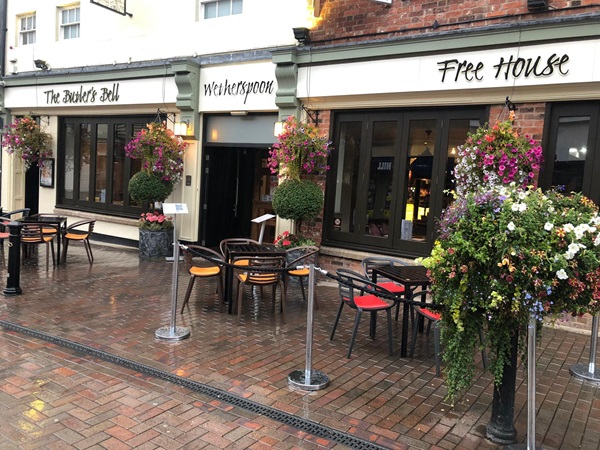
If you have information on the history of this pub, then we’d like you to share it with us. Please e-mail all information to: pubhistories@jdwetherspoon.co.uk